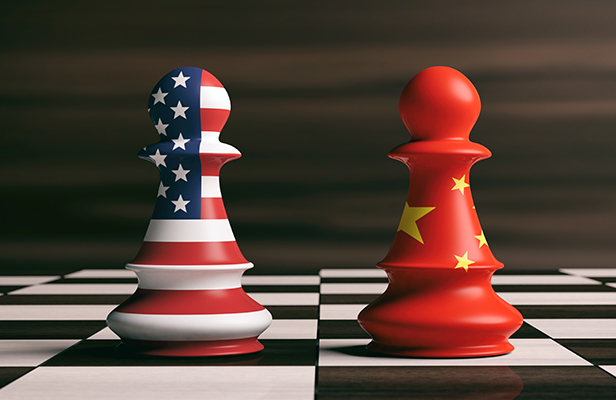October 07, 2019
Downbeat Note Sounds as U.S. China Trade Deal Talks Resume
Still, leaders in the promo products industry are hoping for a deal or a truce that would provide tariff relief and greater certainty for markets.
Leading promotional products industry executives will have one eye on Washington, D.C. this week as top negotiators for the United States and China are set to meet there for talks about a new trade deal between the world’s two largest economies.
While promo pros – and business and political leaders the world over – are hoping for a comprehensive deal or at a least a truce that would stave off further escalation of the trade war, analysts say the likelihood of either of those things occurring has diminished on the eve of the talks.
“With big personalities, compromise and solution is going to be an uphill battle,” Shamini Peter, chief operating officer at Top 40 distributor Axis Promotions (asi/128263), has told Counselor. “We are continuing to advise our clients to take into account all additional tariffs and, if the trade talks don’t go great, there will be an additional amount in their invoices.”
Chinese officials are signaling they’re increasingly reluctant to agree to a broad trade deal pursued by Trump. @jendeben with the latest ▶️ https://t.co/H0iWw6Fb48 pic.twitter.com/W8eskiwpxr
— Bloomberg Economics (@economics) October 7, 2019
The trade war between the U.S. and China, with its tit-for-tat tariffs, has had a direct impact on the promotional products industry, notably driving up prices on duty-affected Chinese imports, accelerating a rush to move supply chains outside China, and creating uncertainty that has made business more difficult. The vast majority of promo products sold in the U.S. are made in China, and as more tariffs potentially take effect and others increase in rate, wider-spread deeper-reaching price hikes are poised to hit promo in the months ahead.
That’s why many in the industry have had fingers crossed for a substantial breakthrough in trade talks – one that would at least stabilize relations if not solve all outstanding issues. Still, heading into the discussions that are set to begin Thursday, the forecast for a positive result is foggy at best, some analysts say.
As Bloomberg News reported, China is reportedly coming to the table with an offer that won’t include commitments on reforming its industrial policy or its government subsidies – both major issues that the U.S. wants addressed. The move from China is “emblematic of what analysts see as China’s strengthening hand as [U.S. President Donald Trump’s] administration faces an impeachment crisis – which has recently drawn in China – and a slowing economy blamed by businesses on the disruption caused by the president’s trade wars,” according to Bloomberg.

If China takes a harder line, expect Trump to respond aggressively – a move that would heighten tensions and possibly carry with it more cracking of the tariff whip, some analysts say. “Beijing is about to make another epic miscalculation,” Michael Every, senior Asia-Pacific strategist at Rabobank, said in a research note published, in part, by Business Insider. “Trump ALWAYS escalates when put under pressure, and has never shown anything so far but a tendency to raise tariffs when disappointed. … If China thinks Trump is going to crumble now just because he faces possible impeachment, they are about to get a very nasty surprise – and hence so are markets.”
Unnamed sources on the U.S. side told Bloomberg News that the impeachment issue has not weakened Trump’s resolve on trade with China. Officially, the White House issued a statement that acknowledged that U.S. Trade Representative Robert Lighthizer and Secretary of the Treasury Steven Mnuchin will meet with a Chinese delegation led by Vice Premier Liu. “The two sides will look to build on the deputy-level talks of the past weeks,” the statement said. “Topics of discussion will include forced technology transfer, intellectual property rights, services, non-tariff barriers, agriculture, and enforcement.”
Sources told Bloomberg News that deputy-level talks have centered, in part, on a potential timeframe for putting in place a limited deal. “Discussions have focused on what U.S. administration officials view as a three-phase process,” Bloomberg reported. “The sequence would involve large-scale purchases of U.S. agricultural and energy exports by China, implementing intellectual-property commitments China made in a draft agreement this year and, finally, a partial rollback of U.S. tariffs.”
However, to move forward on that phasing toward normalized relations amid what would be further trade negotiations in the future, the U.S. would probably demand some concession from China on its subsidies and industrial policy – something that Liu is reportedly unprepared to offer at this point.
Trump faces crucial decision on China as both economies strain https://t.co/mJAsVNP6vA
— David J. Lynch (@davidjlynch) October 7, 2019
Still, the possibility of progress remains. Should this week’s negotiations prove productive, it’s possible that Trump and Chinese President Xi Jinping could meet to hammer out a deal in mid-November at an Asia-Pacific leaders summit in Santiago, Chile, according to The Washington Post. “Just days later, on Nov. 18, the temporary license that allows Huawei, the Chinese telecommunications giant, to buy critical U.S. components expires,” the Post reported. “If Trump opts not to grant an extension, Sino-U.S. relations could go into a deeper freeze.”
To date, the U.S. has imposed tariffs on more than $360 billion in Chinese goods. Tariffs of 15% went into effect on $112 billion in Chinese goods on Sept. 1. More tariffs of 15% are set to take effect on another approximately $200 billion in China-made products on Dec. 15. Meanwhile, tariffs of 25% currently in place on another $250 billion in Chinese products are scheduled to rise to 30% on Oct. 15. China has responded with tariffs of its own. Beijing has particularly positioned its levies to hurt Trump’s supporters in the “industrial Midwest and the farm belt,” according to The Washington Post.
